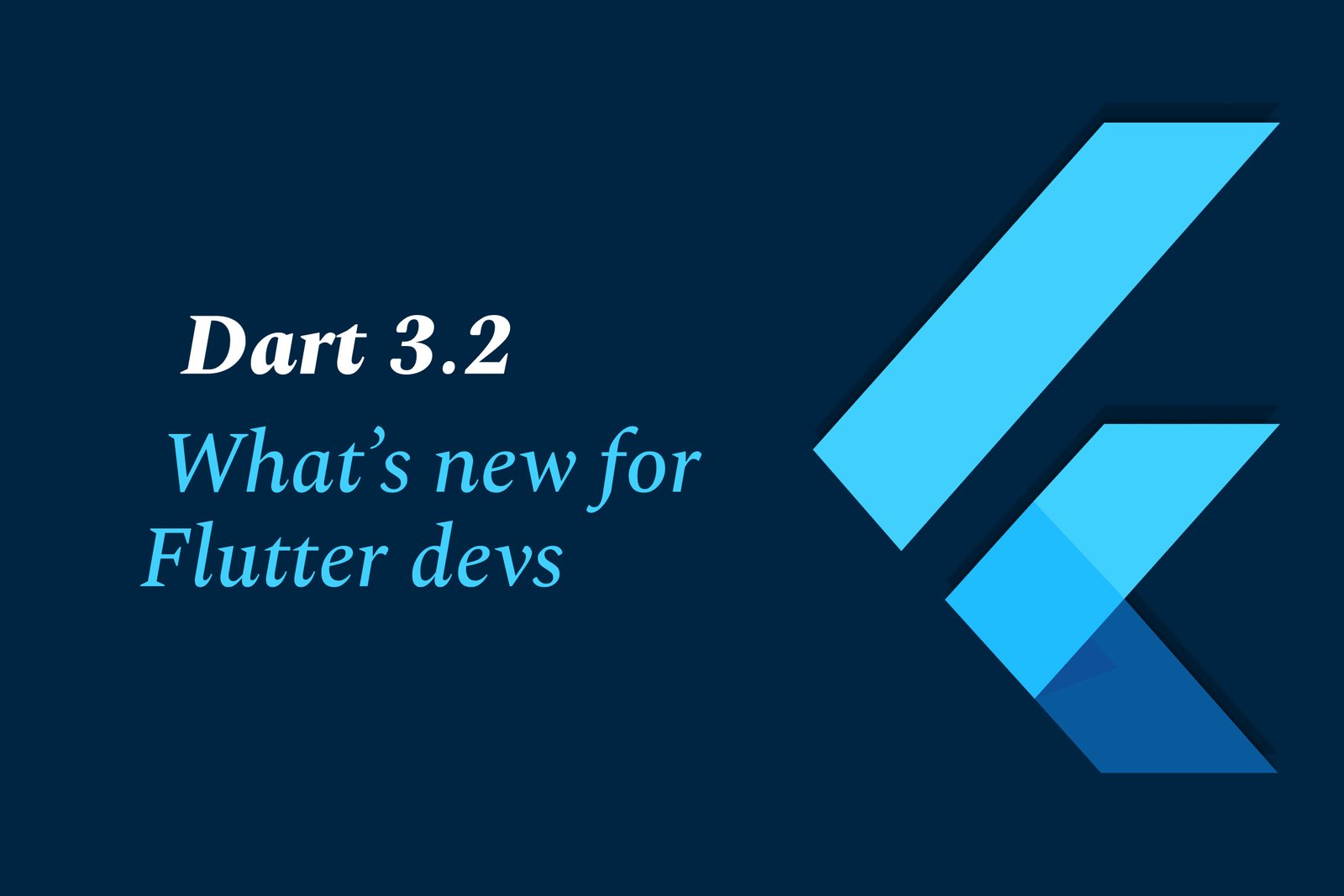Dart 3.2: What’s New for Flutter Devs
Dart 3.2 introduces enhanced pattern matching, a new lint to avoid redundant null checks, improved type inference, and tooling upgrades—helping Flutter developers write cleaner, more efficient code with better performance and stronger error detection.
Dart 3.2: what’s new for flutter devs
1 ) Introduction
Dart 3.2, released in November 2023, brings several improvements and new features aimed at enhancing the development experience for Flutter developers. This iteration focuses on language refinements, tooling enhancements, and new lint rules to help maintain clean codebases.
2 ) New Lint Rule: Avoid Unnecessary Null Checks
A new lint has been introduced in Dart 3.2 that warns developers when a null check is redundant because the type is non nullable. It helps prevent unnecessary code and keeps the code cleaner and more efficient.
3 ) Improved Pattern Matching
Dart 3.2 enhances pattern matching capabilities with more exhaustive checks and better support for records and sealed classes. This simplifies complex conditional logic and makes the code more readable and easier to maintain.
4 ) Language and Performance Improvements
Several under the hood improvements boost the Dart compiler’s efficiency, reducing compile times and improving runtime performance for Flutter apps.
5 ) Tooling Enhancements
The Dart SDK tools and analyzers are updated to provide more insightful diagnostics and better support for Flutter specific scenarios, aiding developers in catching issues earlier in the development cycle.
6 ) Expanded Language Features for Flutter Developers
Dart 3.2 introduces further support for inline class modifiers and enhanced type inference that assists developers in writing concise and type safe Flutter code.
7 ) Summary
Dart 3.2 brings valuable refinements that collectively improve Flutter app development by emphasizing code quality, developer productivity, and runtime performance. Flutter developers are encouraged to adopt this update to leverage these benefits in their projects.
Note: For more detailed insights on Dart 3.2 and Flutter’s latest capabilities, visiting the official Dart and Flutter release notes is recommended.
https://justacademy.in/news-detail/top-flutter-packages-to-use-in-2025
https://justacademy.in/news-detail/flutter-state-management-in-2025:-what’s-trending?
https://justacademy.in/news-detail/new-material-3-support-in-flutter-ui-toolkit
https://justacademy.in/news-detail/speech-recognition-in-flutter-using-ai
https://justacademy.in/news-detail/flutter-sdk-updates-in-july-2025
Related Posts
In 2025, top Angular libraries offer modern, feature-rich components and tools for building dynamic web apps. From powerful data grids to low-code platforms like UI Bakery, these libraries enhance development speed, UI design, and scalability, making them essential for Angular developers.
Migrating from AngularJS to Angular 17 involves gradually upgrading your app by running both frameworks together using tools like ngUpgrade, rewriting components in TypeScript, and adopting Angular’s modern architecture to enhance performance, maintainability, and long-term support.
Angular state management tools help organize and handle app data efficiently, improving scalability and maintainability. Popular options include NgRx for robust, RxJS-based patterns, and newer Signal Store solutions that offer simpler, reactive approaches integrated tightly with Angular’s latest features.
RxJS in Angular empowers developers to manage asynchronous data streams with powerful operators like `forkJoin`, `combineLatest`, and `zip`. Mastering these key operators in 2025 is essential for building efficient, reactive applications that handle complex event sequences seamlessly.
Angular performance optimization in 2025 focuses on improving app speed and responsiveness by using techniques like OnPush change detection, lazy loading, efficient data caching, and AOT compilation. These practices reduce load times, enhance user experience, and ensure scalable, fast Angular applications.
In 2025, Angular remains preferred for large-scale, enterprise apps with its robust, all-in-one framework, while Vue attracts developers seeking simplicity and fast development for smaller projects. Both frameworks excel, with choice driven by project needs and team expertise.
Angular Signals are a new reactive primitive in Angular 16 that enable fine-grained, efficient change detection by automatically tracking dependencies and updating only affected parts of the UI. They simplify state management and boost app performance, revolutionizing Angular's reactivity model.
Angular interview questions to prepare in 2025 focus on core concepts like components, directives, data binding, routing, and dependency injection, along with TypeScript mastery and latest Angular features to ensure strong practical knowledge for building scalable, efficient web applications.
AngularJS reached its official end of support in January 2022, meaning no further updates or security patches. To ensure app security and performance, developers should consider migrating to modern Angular versions or seek third-party long-term support options if immediate migration isn’t possible.
The Angular Roadmap 2025 highlights upcoming features focused on improving developer experience and performance, including zoneless Angular, Signals integration, enhanced Forms, async data handling, improved HMR, and expanded Angular Material/CDK enhancements, driving modern, efficient web app development.










